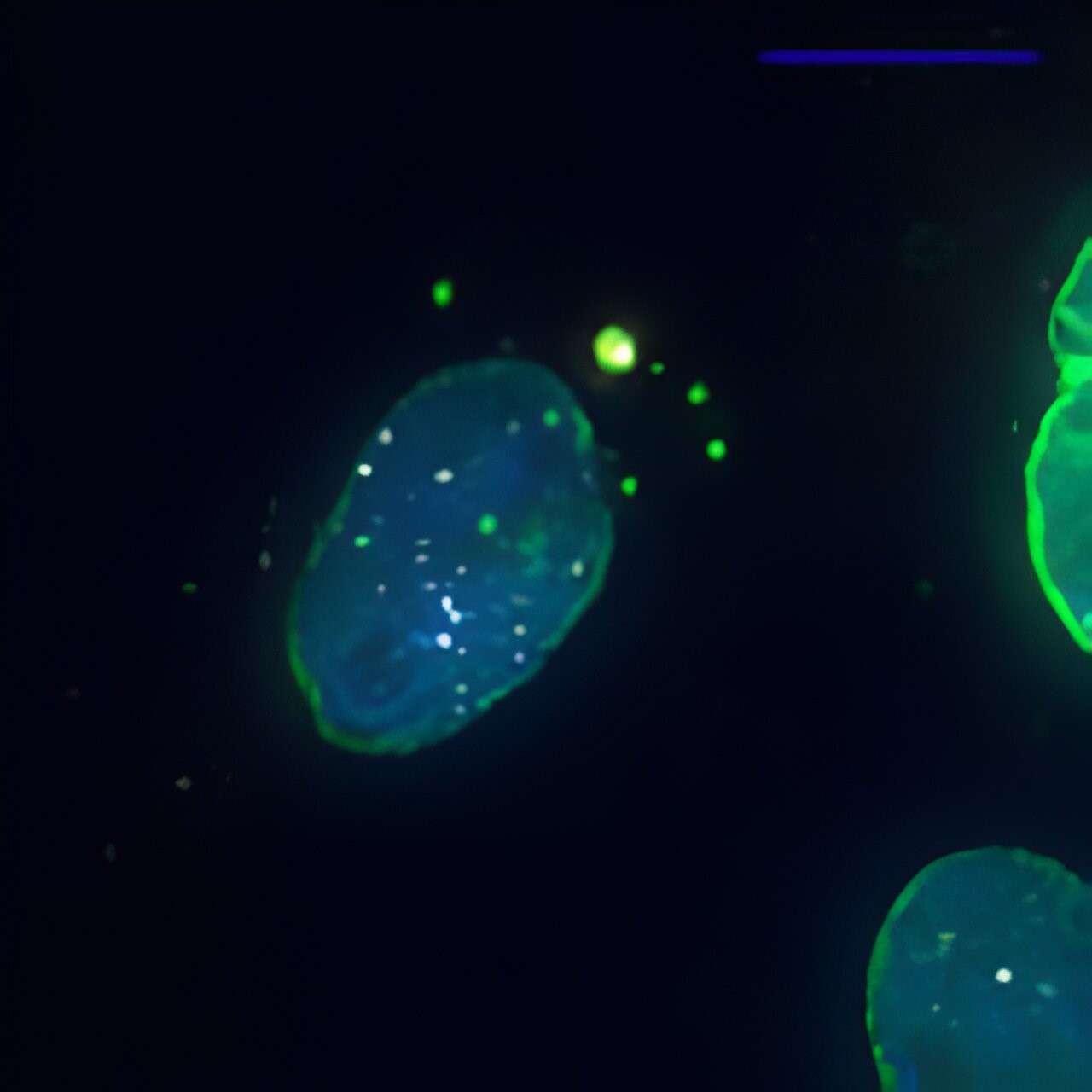Description

Disclaimer: Copyright infringement not intended.
Context
Researchers at ETH Zurich recently identified a previously unknown compartment in mammalian cells. They have named it the exclusome. It is made up of DNA rings known as plasmids.
Details
- The exclusome is constituted by a distinct type of DNA structure known as plasmids and resides in the cell plasma, a region adjacent to the nucleus.
- This discovery challenges conventional wisdom in cell biology, where the majority of the cell's DNA is typically housed within the nucleus, organized into chromosomes.
Composition of the Exclusome
- Plasmids and Telomeric Rings:
- The exclusome primarily comprises plasmids, which are circular DNA molecules.
- Some of these plasmids are derived from external sources, while others, called telomeric rings, originate from the telomeres or capped ends of chromosomes.
- Notably, these plasmids lack the genetic instructions required for protein synthesis, setting them apart from chromosomal DNA.
The Role of the Cell Nucleus
- Selective DNA Handling:
- The cell nucleus plays a pivotal role in the exclusome's formation.
- It selectively removes DNA rings, including telomeric rings and plasmids, and relocates them to the exclusome.
- This mechanism serves as a protective measure, safeguarding the chromosomes from potential disruptions caused by the presence of foreign DNA within the nucleus.

Potential Functions of the Exclusome
- Cellular Immunological Memory:
- Emerging research suggests a potential link between the exclusome and cellular immunological memory.
- A specific DNA-binding protein interacts with DNA rings, possibly triggering a signal cascade.
- This cascade may lead to the production and release of inflammatory messenger substances, alerting the immune system to a potential pathogen, such as a virus.
- Prolonged presence of DNA rings in the exclusome may sustain the immune response.
- The chronic activation of the immune system could potentially contribute to autoimmune responses, like systemic lupus erythematosus.
Evolutionary Origins of the Exclusome
- Remnant of Early Evolution:
- The exclusome's origins can be traced back to early evolution when eukaryotic cells emerged.
- Eukaryotic cells likely evolved from the fusion of ancient bacteria and archaeons (single-celled organisms resembling bacteria).
- These early cells had ring-shaped DNA from different sources, necessitating mechanisms for DNA organization and protection.
- The exclusome may have initially served as a means to enclose and protect ancestral DNA, preserving it throughout evolution.
Comparing the Exclusome to the Nuclear Envelope
- Structural Differences:
- Although the exclusome's envelope shares similarities with the nuclear envelope, it is simpler in structure.
- The exclusome envelope features gaps, reminiscent of the early stages of nuclear envelope formation.
- In the case of the nuclear envelope, these gaps eventually close or are filled with specific pore proteins.
Unanswered Questions
- Mysteries Surrounding the Exclusome:
- Several key questions remain unanswered, such as why plasmids are enveloped in an incomplete membrane structure.
- The specific characteristics that determine whether chromosomal DNA is enclosed within a fully formed nuclear envelope while extra-chromosomal DNA is not are still unknown.
Future Research
- Unraveling the Exclusome's Secrets:
- The ETH Zurich research team plans to conduct further investigations to shed light on various aspects of the exclusome.
- This includes studying cellular changes associated with plasmid DNA and deciphering the mechanisms governing the deposition of plasmids into the exclusome.
- Continued research endeavors will help unravel the mysteries surrounding this recently discovered organelle.

Conclusion
In summary, the exclusome represents a groundbreaking discovery in cell biology. Comprising DNA rings within the cell plasma, this organelle challenges conventional notions of DNA organization in eukaryotic cells. While its functions are still being explored, it may hold the key to understanding cellular immunological memory and its potential implications for autoimmune responses. Moreover, the exclusome's evolutionary significance and structural characteristics warrant further investigation, ensuring that the secrets of this intriguing organelle are fully unraveled.
|
PRACTICE QUESTION
Q. Explain the recent discovery of the "exclusome," a novel organelle in mammalian cells, and discuss its potential implications in the field of cell biology. How does it challenge conventional theories regarding DNA organization in eukaryotic cells, and what clues does it provide about the evolutionary history of cellular structures? (250 Words)
|
















